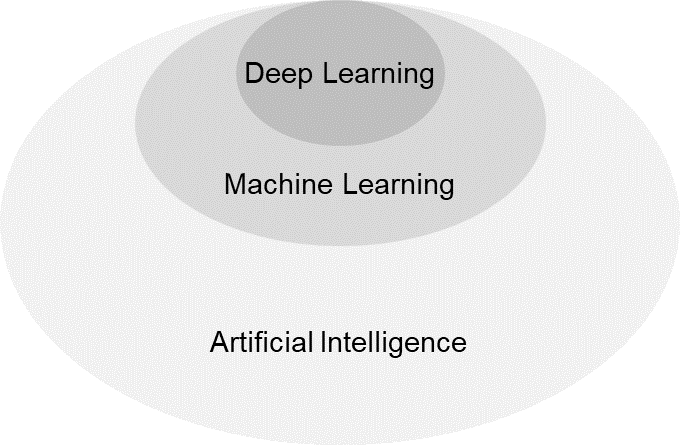In modern life, Artificial Intelligence (AI) already plays a significant role in social media and streaming pro-viders already, such as Instagram and Netflix. The AI can be used to place personalised advertisements due to the shared data of its users. Nonetheless, the AI approach can be implemented in vast swathes of TSOs’ core business to adapt a large amount of data, providing support for decision making either from a system operation perspective or within corporate development and business administration.
The AI approach is part of computer science that focuses on the simulation of human intelligence applied via machines and computer systems. One aspect of AI is the machine learning (ML) which is able to recognise a certain pattern (e. g. of a picture) in such a way as to memorise and identify a similar pattern. A more advanced aspect of ML is the Deep Learning Method (DL). A common approach to realise such a DL is to build a so-called Artificial Neuronal Network, which was inspired by the human brain. The main idea is that such an algorithm can process information out of a variety of input data to ‘learn’ a specific task’s fulfilment.

Moreover, this can be distinguished between a strong AI, which is equal in the capability of a human mind and can be applied to a variety of areas, and a weak AI, which is just capable of fulfilling a specific task of a certain area.
All the existing AI implementations must be considered a weak AI.
Technology Types
N/A
Components & enablers
Until now, the company that provides services within the new platform Economy own their AI algorithm. Therefore, the software code is operated on locally redundant Data Centres.
Advantages & field of application
In general, AI software solutions show high potential in improving an organisation’s performance and can be implemented in both technical and economic terms. The main advantages and useful applications for a TSO’s core business is still under discussion but might be established in one of the following:
- Using DLs in drones for maintaining the purposes of OHL.
- Applying digital twins of high-voltage equipment of high importance.
- Introducing software in controlling & accounting to improve administration performance within an organisation.
- Using optimisation code for automated energy trading.
To use these affects, TSOs must acquire evidence of certain advantages. It is necessary to identify specific potential in either grid operation, market design or administration processes to accelerate the development of AI software solutions and to lead it into ‘best practice’ examples.
Technology Readiness Level
TRL Score 6 – Technology demonstration
Research & Development
For the time being, there are many methods and concepts developed for different ML purposes. A key to a useful implementation of AI soft-ware solutions in a TSO’s core business is to launch external and internal projects to adapt those measures to experience best practices and lessons learned.
Best practice performance
Until now, there has bene no decent ‘best practice’ example from a TSO’s perspective.
Best practice application
References
N/A